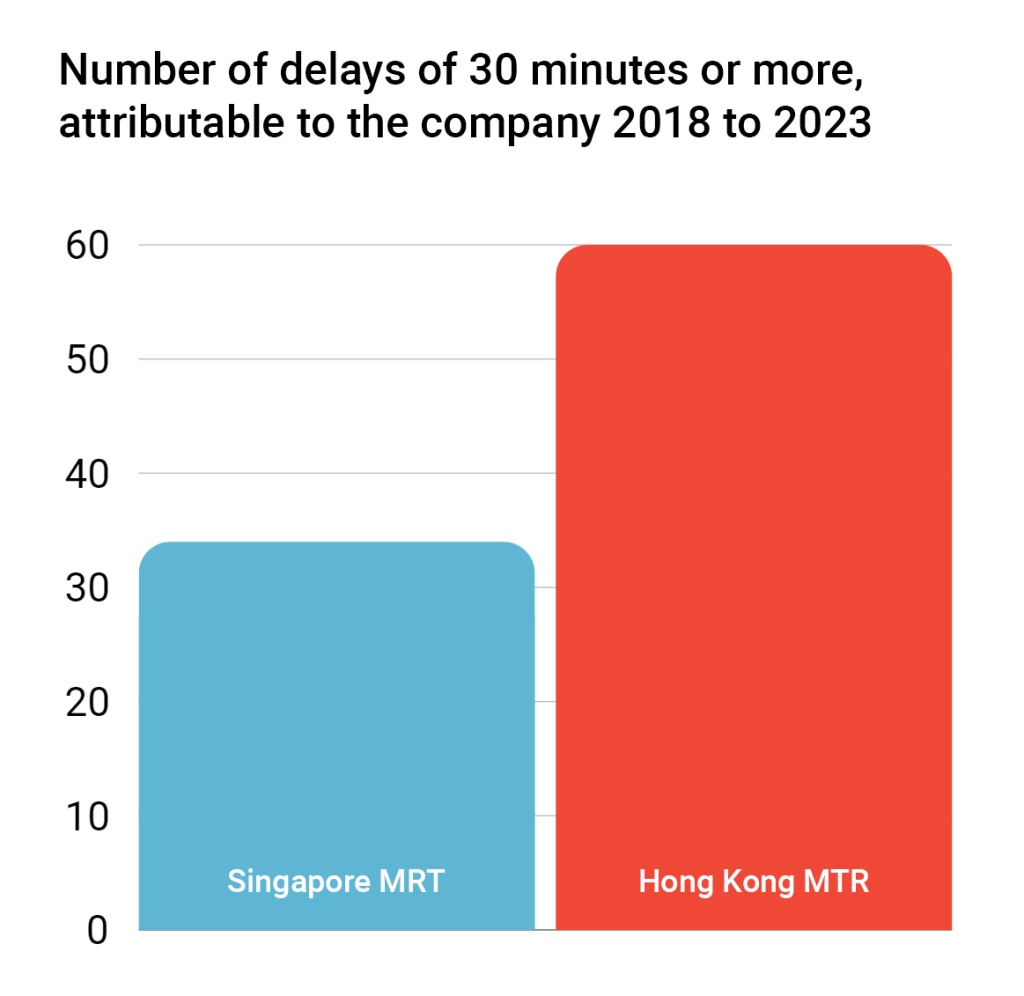Data shows Singapore MRT is more reliable than Hong Kong MTR—and has been for several years
Many believe that Hong Kong's MTR is the gold standard Singapore should aspire to. But data shows the roles have reversed in recent years.
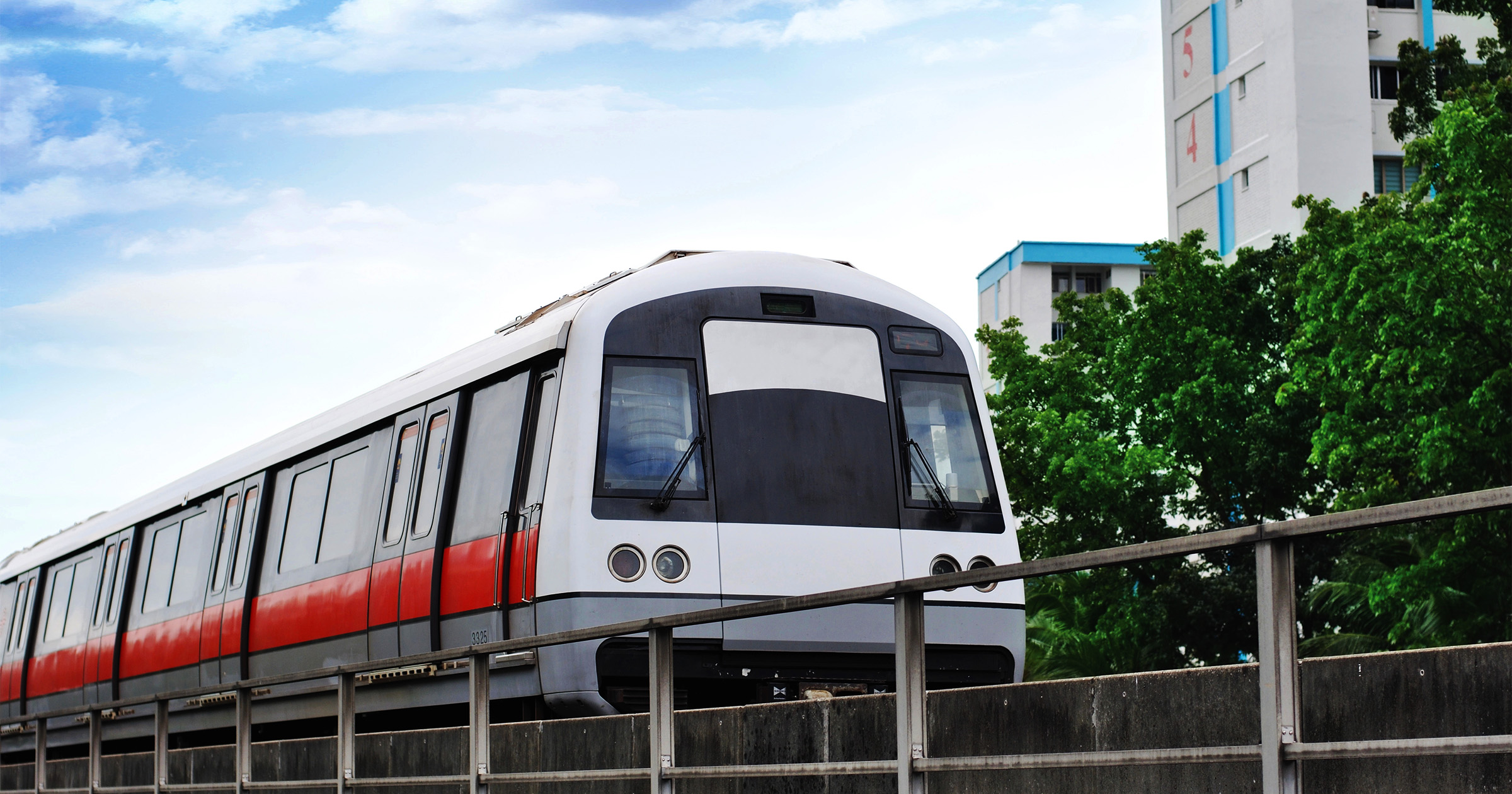
Disclaimer: Any opinions expressed below belong solely to the author, however all of the figures are an official and objective representation of reality.
Now that a major incident has disrupted Singapore’s East-West Line (EWL) for a few days, critics of Singapore’s public transit are enjoying an opportunity to gloat about how supposedly inferior and mismanaged it is in comparison to other subways—chiefly Hong Kong’s acclaimed MTR system.
Unfortunately, these perceptions are grossly unfair and are not based on data, as Hong Kong’s superiority in terms of reliability of public transit not only isn’t the case this year, but hasn’t been for at least the past six.
Yes, a decade ago Singapore’s MRT suffered a period of relatively frequent reliability issues, as admitted by Khaw Boon Wan, then Minister for Transport. At the time, Singapore’s trains averaged 130,000km per failure, compared to 500,000km in Hong Kong.
Today these figures are in the millions of kilometres.
Not only has Singapore managed to significantly improve its reliability—it is now either on par with or outperforming Hong Kong’s MTR by certain measures.
Let’s look at the one already quoted—mean kilometres between failure (MKBF), which resulted in a longer than 5-minute delay—as reported in the first half of 2024.
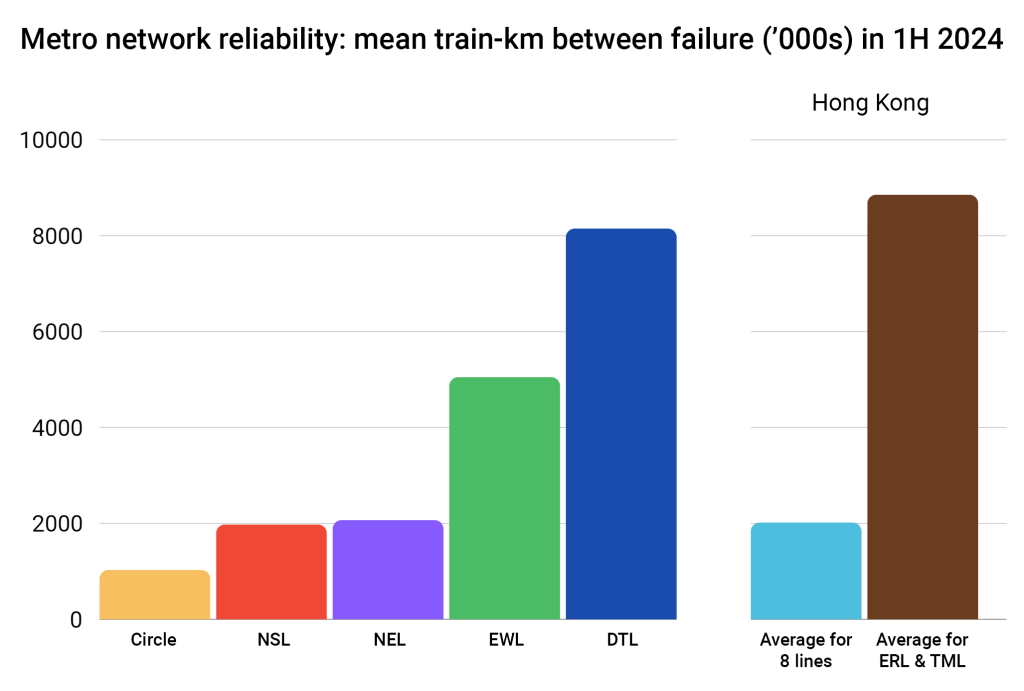 Averages for Hong Kong MTR for the period of April to June, as Q1 Service Newsletter is nowhere to be found. / Sources: LTA / HK MTR
Averages for Hong Kong MTR for the period of April to June, as Q1 Service Newsletter is nowhere to be found. / Sources: LTA / HK MTRPlease note that MTR does not provide a detailed breakdown per line, but an average for eight lines and another average for further two (which appears to be because of the technologies shared between the lines).
The eight lines are (in blue):
Island Line South Island Line Kwun Tong Line Tsuen Wan Line Tseung Kwan O Line Tung Chung Line Disneyland Resort Line Airport ExpressThe remaining two are (in brown):
East Rail Line Tuen Ma LineAs you can see, the average for most of Hong Kong’s MTR network is about 2 million kilometres between failures, and over 8 million for two of the longest lines, which provide a link for outlying districts to the city.
8 million is what Singapore’s Downtown Line is currently managing, with EWL, currently disturbed by the damage done in the West, reporting over 5 million. In fact, the Circle line is the only one falling behind, at “just” 1 million kilometres between faults—a figure which would be considered a gold standard 10 years ago.
We can cherry-pick, but it looks like both systems are fairly evenly matched here.
There is, however, a more notable difference in incidence of delays of 30 minutes or more attributable to the operator (so not caused by external factors), where Singapore has leapt ahead in recent years:
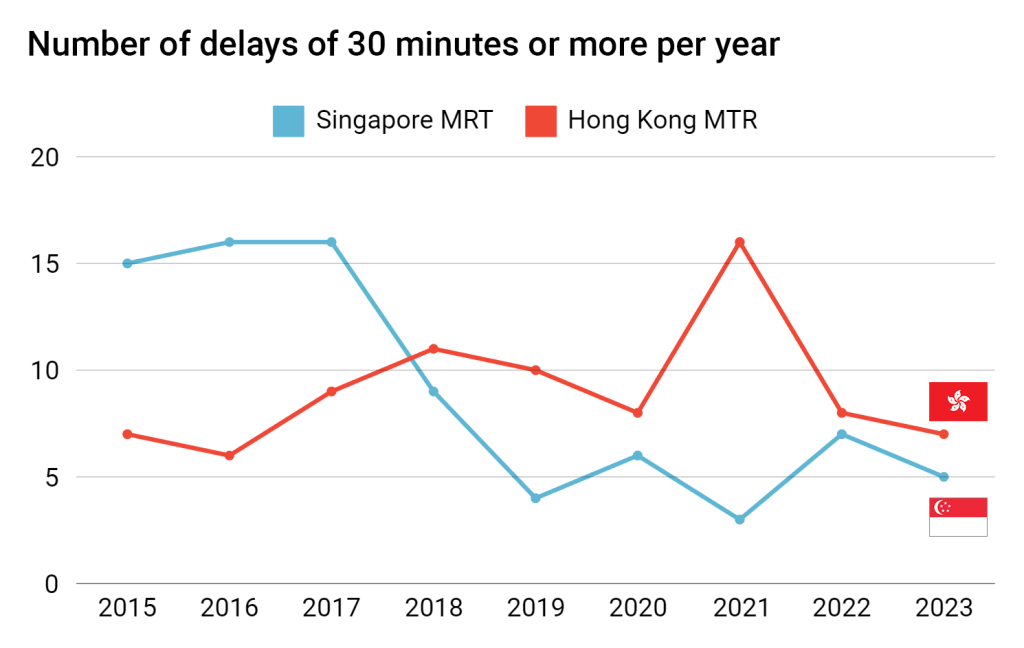 Source: Hong Kong MTR and Singapore LTA. Data does not include Singapore’s Thomson-East Coast line.
Source: Hong Kong MTR and Singapore LTA. Data does not include Singapore’s Thomson-East Coast line.This chart shows what I mentioned earlier, that about ten years ago, Singapore was trying to considerably improve its reliability and cut major faults, which were at least twice as frequent as in Hong Kong.
Since 2018, however, for six consecutive years, it has handily outperformed HK in every single one of them, cumulatively reporting just 34 faults leading to delays of 30 minutes or more, compared to 60 in Hong Kong.
What about major incidents?
Granted, East-West Line’s downtime is the worst incident on the MRT network in years, although it affects only a small portion of the population given how far west it has occurred. What about Hong Kong? Has it had any major events which led to physical damage and delays?
Well, it has.
Back in 2019, during testing of a similar signalling system that led to the collision in Joo Koon in 2017, two trains of Hong Kong’s MTR crashed into each other, causing significant damage, injuring two drivers and leading to a three-month investigation and suspension of works.
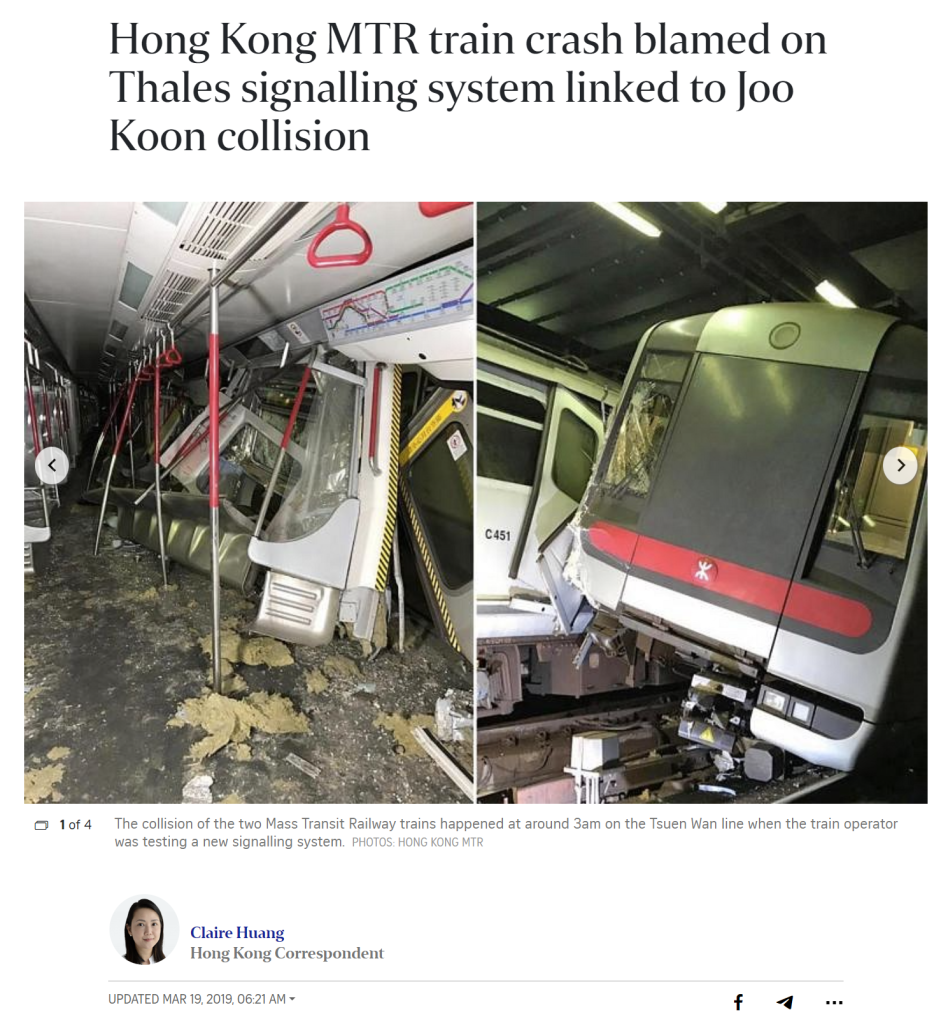
Later that same year, a serious derailment saw three MTR carriages flying off the tracks, injuring eight people on board:
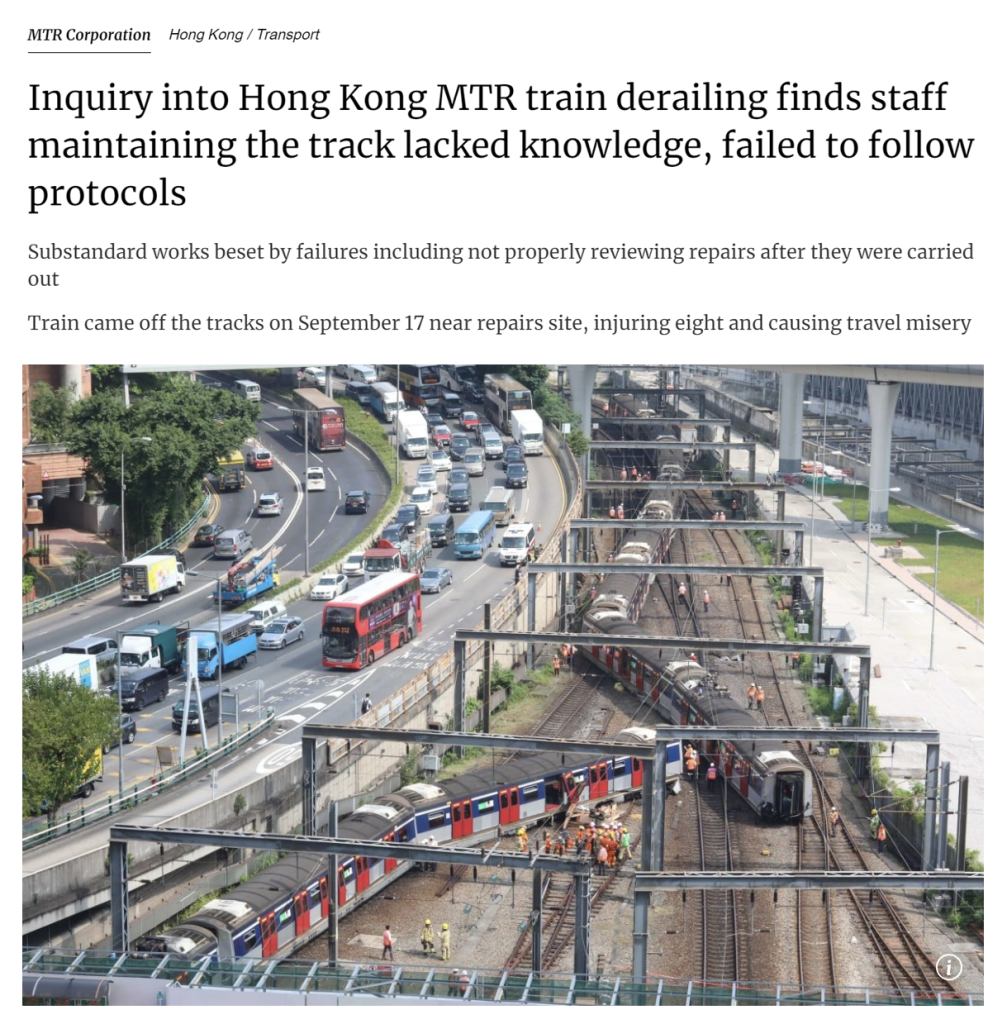
In November of 2022, a dislocated, corroded barrier fell into the path of an oncoming MTR train, leading to its derailment at one of the stations, forcing evacuation of 750 passengers, including 150 who had to exit through the emergency door and walk on the tracks through the tunnel to the next stop:
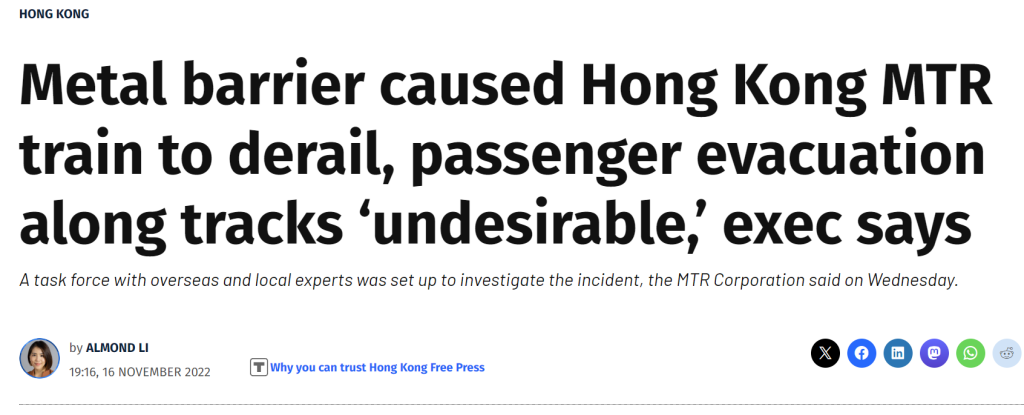
Or just in August of this year, another evacuation was ordered after one of the trains sent plumes of smoke into the carriages and station platform:
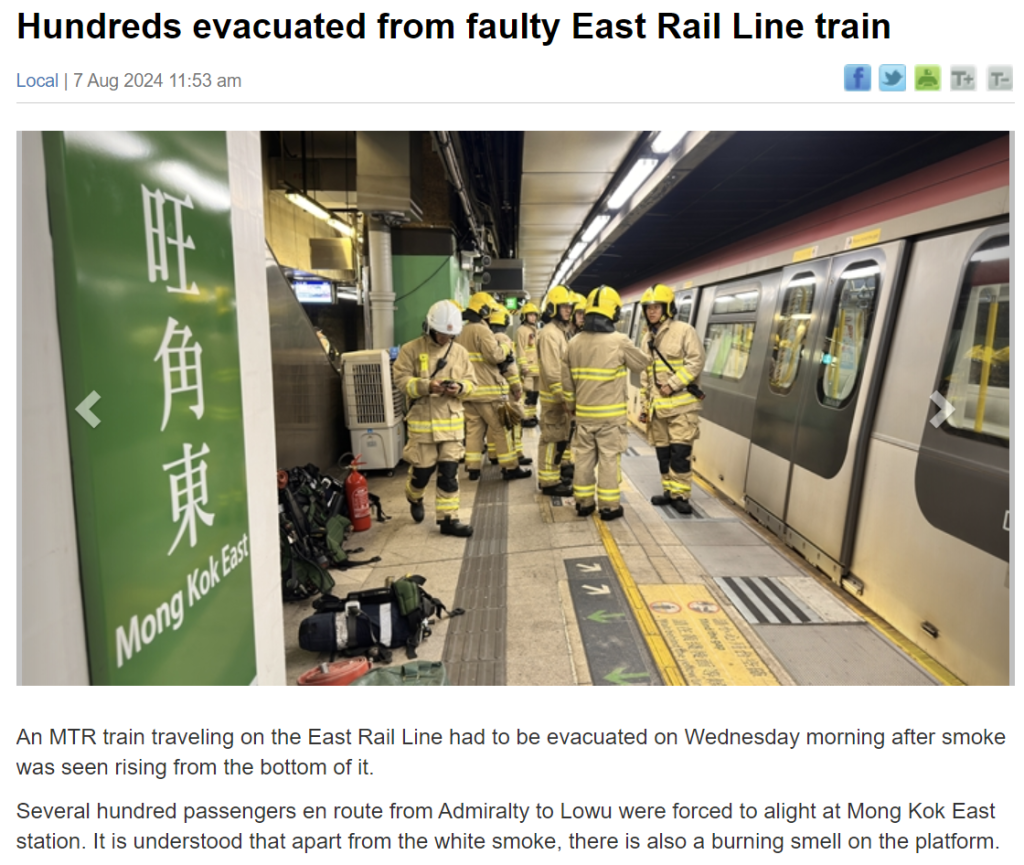
These are just a handful of incidents over the past few years, which would surely be noted as major events in Singapore. And yet, neither of them means that Hong Kong’s MTR is badly managed—these things simply happen, even to the best companies in the business anywhere in the world.
Which include Singapore’s subway operators.
Featured Image Credit: Dreamstime

 ShanonG
ShanonG 